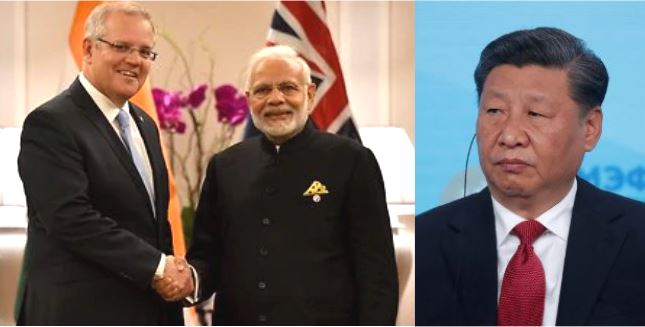China was doing very well, as it was able to close the RCEP talks and formulate the agreement without India, and then riding on this accomplishment, it thought of teaching Australia a lesson by starting tariff wars for seeking the truth. However, the dopamine rush for China will be short-lived, given the possibility of a Free Trade Agreement (FTA) between India and Australia is gaining ground.
India’s External Affairs Minister, Subrahmanyam Jaishankar during his interview with Lowy Institute, Australia affirmed that the talks between the two sides have picked up some serious pace, which comes a decade after they started negotiating for the same.
Following the RCEP agreement which India stayed away from, made China the single largest consumer market as well as the largest supply hub among all the member countries. But following the agreement, Beijing suddenly started a tariff war with Canberra. Capitalising on the trade deficit it had with Australia, and the fact that China was the major export destination Xi Jinping tried to make the use of the opportunity to teach Aussies a lesson and make it an example for all other countries. However, this led to the Chinese losing the only leverage they had on Australia. As and when India-Australia FTA gets done and India can replace China as the export destination, Xi Jinping will have one less weapon up his sleeve to bully other countries.
During the event, Jaishankar said, “There is a discussion on a free-trade agreement, a bilateral free-trade agreement as well because, as you know, we didn’t sign the RCEP.” These statements coming from the top decision make the spectrum of Indian government, signal to the extent to which the relationship has grown.
For a really long time, China kept Australia in its clutches just because it was Canberra’s largest trading partner and there were no other options available. This time, India played China well, and with the Australians out of Beijing’s trade shackles, it has now been able to sustain itself by gaining Indian market and in this case, without selling its sovereignty. Thus, in such a tense environment, India was able to make use of one wrong step by the Chinese and bring Australia to its fold and if the FTA is done, it will concretise the relations.
Earlier too, TFI reported that the three-nations (India-Australia-Japan) driven Supply Chain Resilience Initiative (SCRI) have planned to set up institutions and industrial parks as a solution to resolve the trade and investment barriers, streamline risk management system, improve sea and air connectivity, among others. The framework would include digitisation of trade documents, exchanging of regulatory information, improving transparency as well as making it easier for businesses to flourish in the trilateral bubble which can be expanded further. In addition to the deep Australia-Japan relations, a trilateral, as well as an FTA between India and Australia, means serious business.
The Chinese may have had it easier in 2020 compared to how it has dealt with the whole world in the past. However, the latest development in the greater scheme of things, increasing the possibility of creating an India-Australia FTA, will lead to other countries joining in, and as per India’s policy priority, India is looking for multiple bilateral FTAs and create a larger supply chain network which can be a counter to the Chinese monopoly. It is said, instead of removing a line, draw a bigger line, and India and Australia are about to give the same shocker to China, and maybe a precursor to the coming trade and commerce collaboration among like-minded countries.








